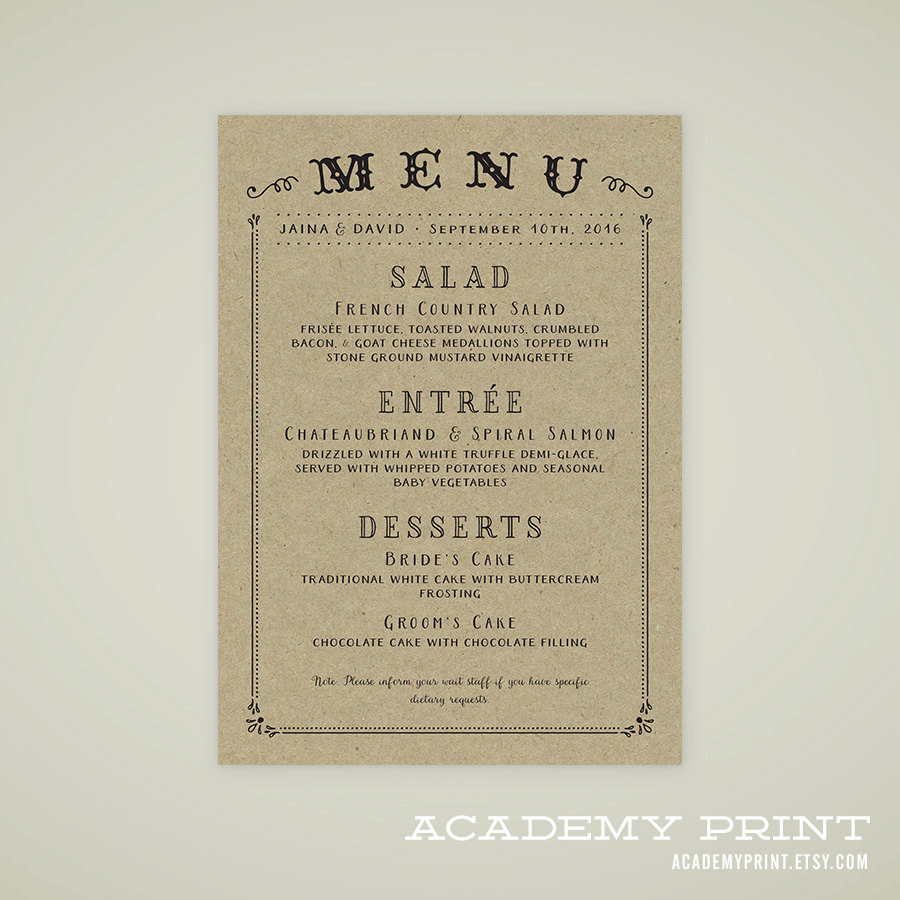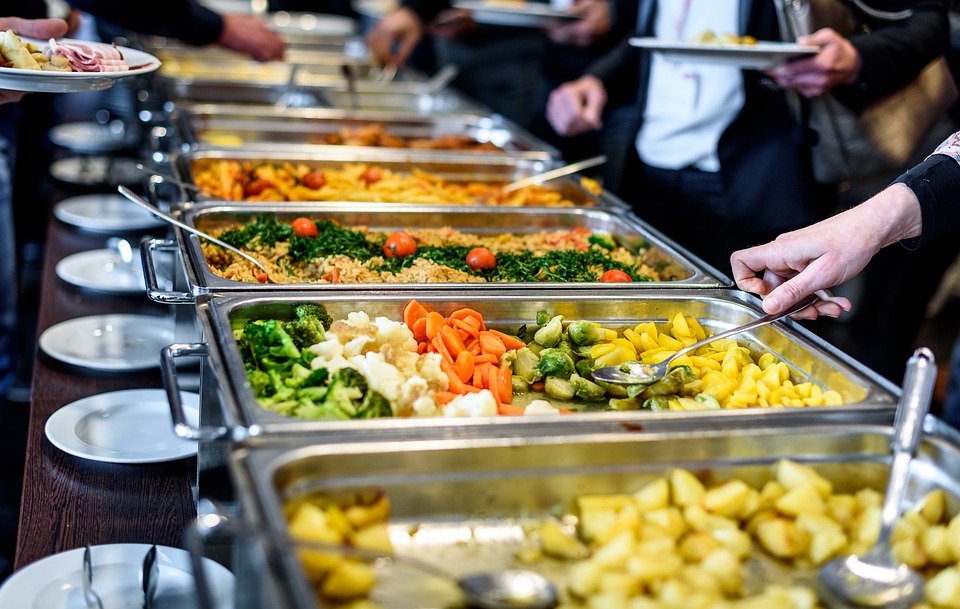12+ Buffet Menu Examples to Download
Planning to throw a huge party or event soon? Of course, one of the things you need to take care of is the tasty food being served for your guests. If you’re going crazy about planning the food selection, here are some tips on how to help you plan your buffet without the major hassle. (And you can also save time and money while you’re at it too).
How to plan a perfect buffet
1.Plan out the big picture
When planning a buffet, you don’t necessarily have to go overboard with a theme; for example nobody wants to be invited to a zucchini-only dinner party; but it helps to have particular flavors from a particular cuisine that connect all of the plates on your table. For example, if you want to have an Italian cuisine centered dish, then look up for recipes that helps you prepare and cook for this kind of meals. You may also see sumptuous seafood menu examples.
2. Consider your budget
Decide how much you want to spend altogether and that includes the food, silverware, plates, and drinks. Don’t forget to allow your budget to some extra cash for unexpected costs like taxes, tips, and potential emergencies.
To help you organize your financial transactions, keep track of what you’re spending by keeping all of the receipts you spent on the buffet and create a budget chart to oversee your spending.
3. Plan your buffet table in advance
Gather all your serving dishes together the night before the event will take place and place them on the table. To help you remember, attach some sticky notes to remind you which food goes in which dish. Arrange your table in advance to avoid making last minute decisions and preparations. This is to also avoid disastrous preparations. To be more efficient in your planning, plan ahead of time by drawing the set-up of the buffet on a sheet of paper. You may also check out dinner menu samples.
Make several drafts. Then decide and choose the one that you like best, then recreate it using your table and dishes.
Buffet Menu on Chalkboard Design
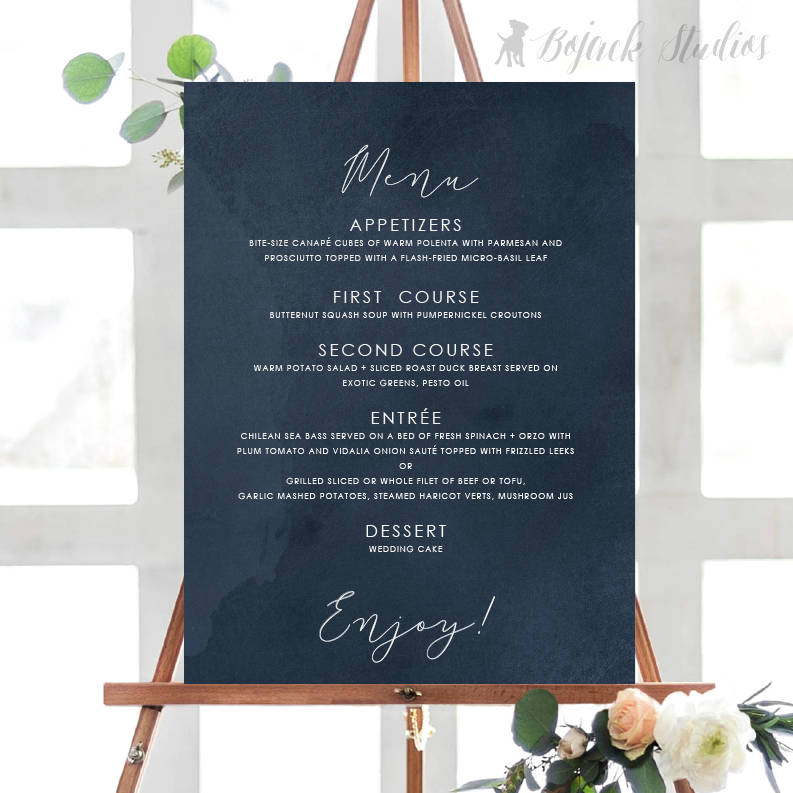
Buffet Menu on a Frame Design
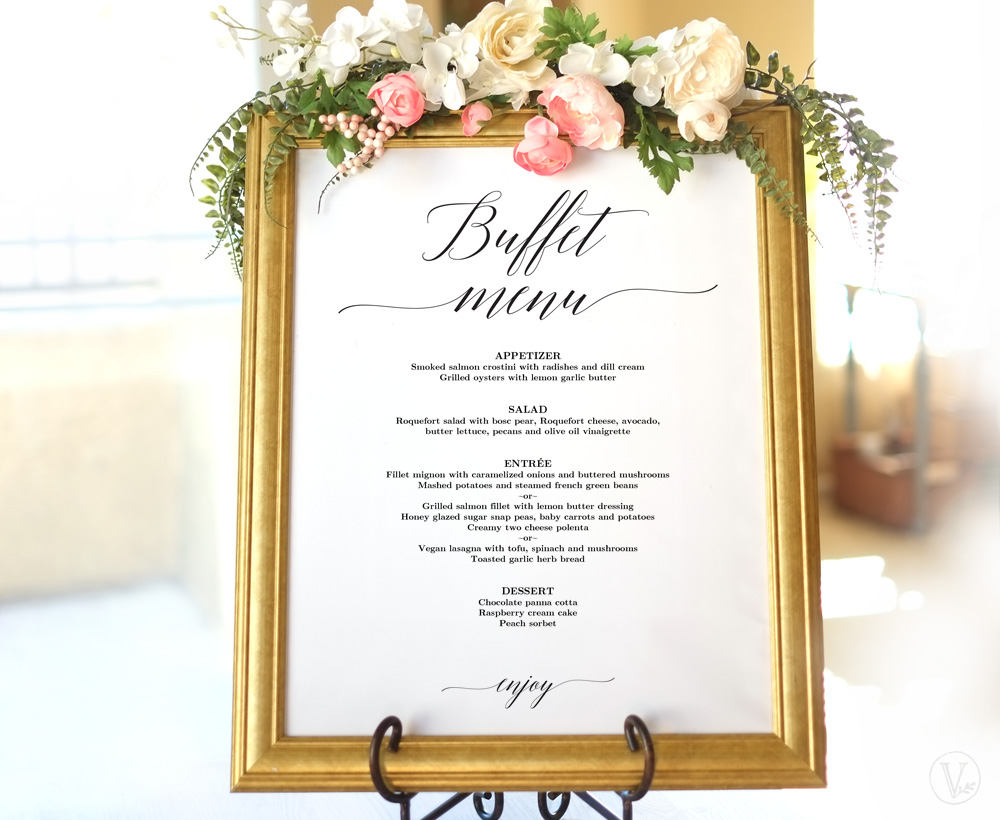
Buffet Menu on a White Frame
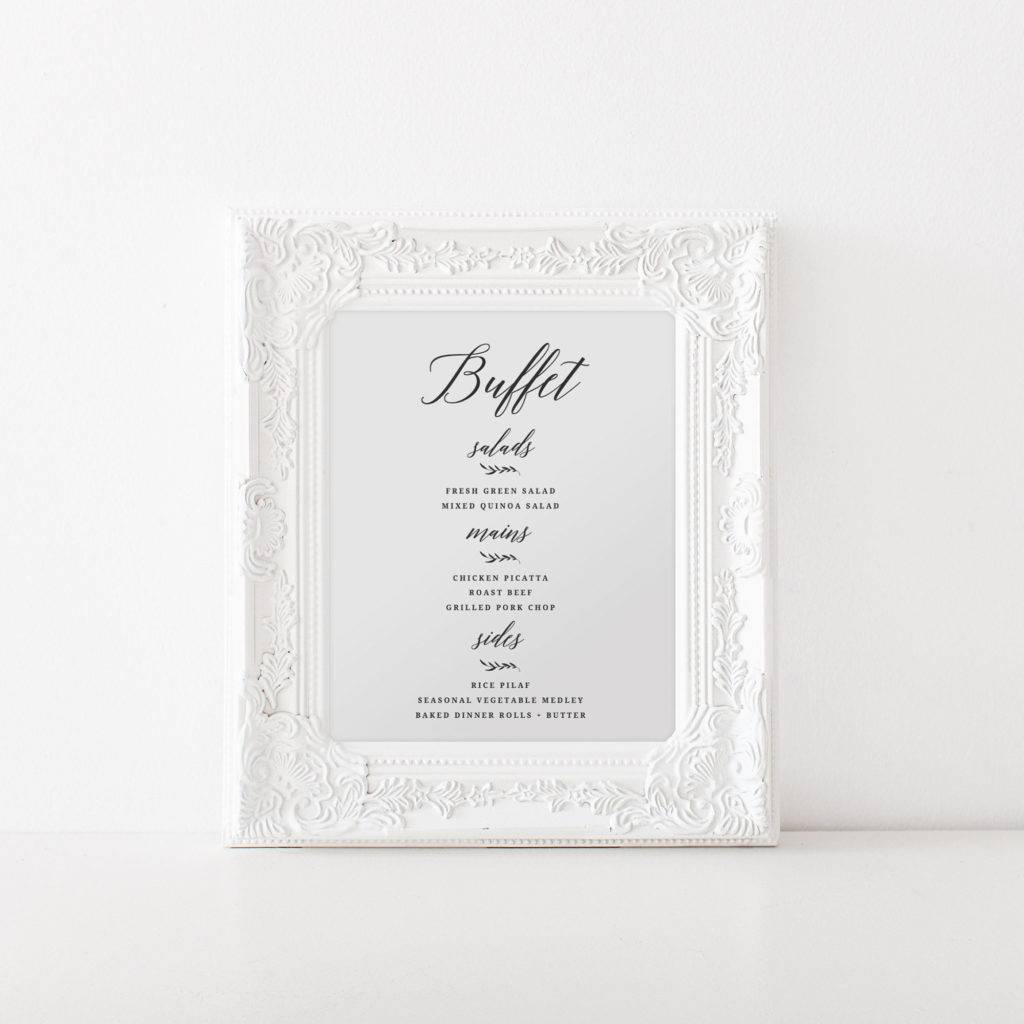
4. Choose a venue with big space
The ideal amount of room to fit all guests comfortably is around ten square feet of the space of your venue. With this, you can still have room for getting food and mingling with your guests.
For eight square feet space, it will allow you still for some seating, for seven and a half square feet are ideal for smaller crowds, and six square feet should be the minimum space that you should designate for the buffet, but this is for a small crowd. However, if your location has multiple rooms, try to make use of the rooms by serving the food and drinks in one room, then having the seating in another. You may also see barbecue menu examples.
5. Place the table in the center of the room
Unless if you have a wide open space (such as an outdoor space for example), clear the room you plan to use for your event. Clear out all clutter, furniture, and decorations that you won’t need for the buffet. Place the serving table in the middle of the room and place the additional tables to either side for the plates, silverware, and cups. It will allow the guests to access to the food from both sides of the buffet table and will keep the queue moving quickly. You may also like cafe menu designs.
Ideal length for the tables you will use are: an eight-foot table will hold enough food for approximately thirty people. If you have more guests, you will need to put multiple tables together. Don’t forget to have a set of serving spoons and tongs for each dish; one for each side of the table.
6. Put out a separate table for beverages
Give your guests a chance to choose their food first and put their plates down before choosing and pouring their chosen drink. By separating the beverages, this will minimize the potential risk for spills and slips. This will also help your guests maneuver the queue with ease. It is also a best idea to have a separate tables for alcoholic and non-alcoholic beverages. And lastly, it may also be a good idea to serve water at its own table. You may also check out salad menu samples.
Depending on how many guests you have, you may want to have multiple pitches of drinks. This is efficient so your guests don’t necessarily have to wait in line.
7. Consider the traffic flow of your guests
You can lessen the disorganized crowding of the guests on where to line first and where to leave by simply letting people know where they should line first as they walk up to the table, or by providing a sign at each end of the table. Another tip to avoid uncomfortable crowds is to keep the different types of food separated from each other if possible. You might be interested in takeaway menu designs and examples.
For example, keep desserts far from the first course of the meal. If you have vegetarian food options, try to separate them from the non-vegetarian tables. Lastly, why not consider having a smaller table for appetizers? You can place this closer to the alcoholic beverages such as red wine or champagne for example.
Floral Buffet Menu Design

Setting up the Table
1. Avoid difficult situations in setting up your buffet
Think about what you would have liked to happen during a buffet and plan your table around your idea. Some tips could be:
- If you wish to have room to set a plate down as guests organize their food on their plates or when they scoop some food to their plates, leave enough extra space on the buffet table for people to do so.
- If you wish you to let your guests have the privilege tasting the food first, leave toothpicks or little spoons next to the dishes for your guests to try the food. You may also see wedding menu examples.
- If you more garbage to deal with than you actually expect, set up more trash bins and make them more noticeable to the guests so they can easily spot them and throw their trash in it. Remember to segregate them for biodegradable to non-biodegradable.
2. Have a nice presentation
Consider what type of plates, cups, utensils, containers, and tablecloth you would like to use for your buffet. You don’t necessarily have to use your fine china, but think up of a pleasing presentation for your table to be more appetizing. It’s up to you what type of silverware you will use; either metal, plastics, or porcelain, just don’t put your food out in greasy, cardboard boxes. It’s up to you what type of tablecloth to use, as long as you don’t mind it to get dirty. You may also see examples of modern menu designs.
For additional tips, decide on a color or a theme when putting out everything on the table. This will bring the look of the table together. Don’t focus on putting lots of colors and patterns on your table. This will throw off your presentation. Stick with just one or two solid colors.
3. Place the plates at the start of the queue
Obviously, it’s impossible for your guests to access the food well without having plates. Set up a buffet with two or more stacks of plates of about ten plates each. Don’t pile the plates too high, to avoid them tipping over and break everything. Don’t forget to put condiments near the type of food they belong with. Furthermore, if you have separate tables for your appetizers and desserts, you will need to add plates for them as well. You may also like salon menu designs and examples.
4. Put the silverware at the end of the table
Finish the table with the utensils and napkins. This will help avoid the hassle of trying to hold on to knives, forks, spoons and linens along with a plate while your guests are trying to serve themselves. Make sure you put out all types of silverware that will be needed.
5. Make labels for each of the dish that is served
Write them down on small pieces of colored paper, sticky notes, or cardboard. Put the labels next to each dish once all of the food is out on the table. This will help guests to know what the dishes are served before they put it on their plate. This will immensely help eliminate a lot of uneaten and thrown away food. You may also check out chinese food menu designs & examples.
Write labels in bold, large, and clear writing that all guests will be able to read without difficulty. Typed labels are highly suggestive if you have a bad handwriting. If you have some of your guests who are vegetarian, mention which dishes contain meat or dairy.
Buffet Menu Carnival Design
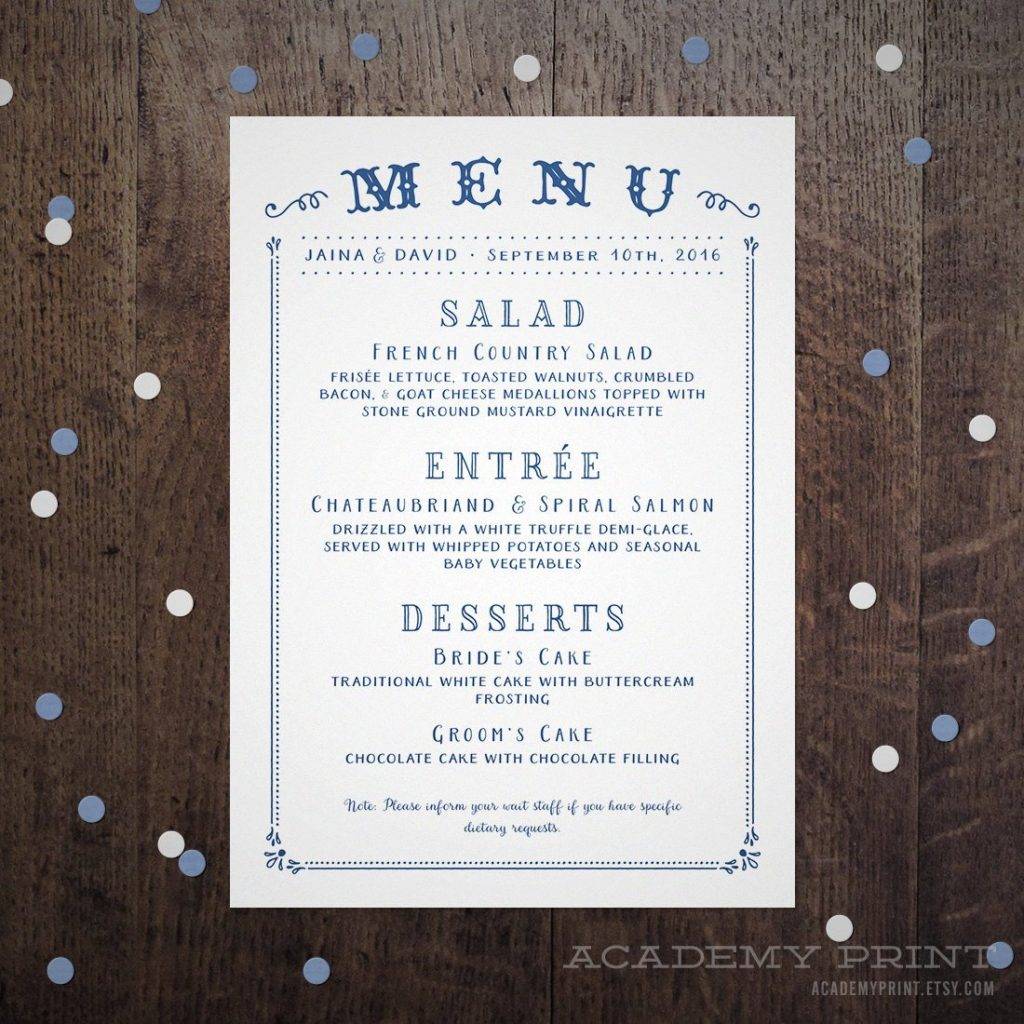
Let’s Eat Banner Buffet Menu Design
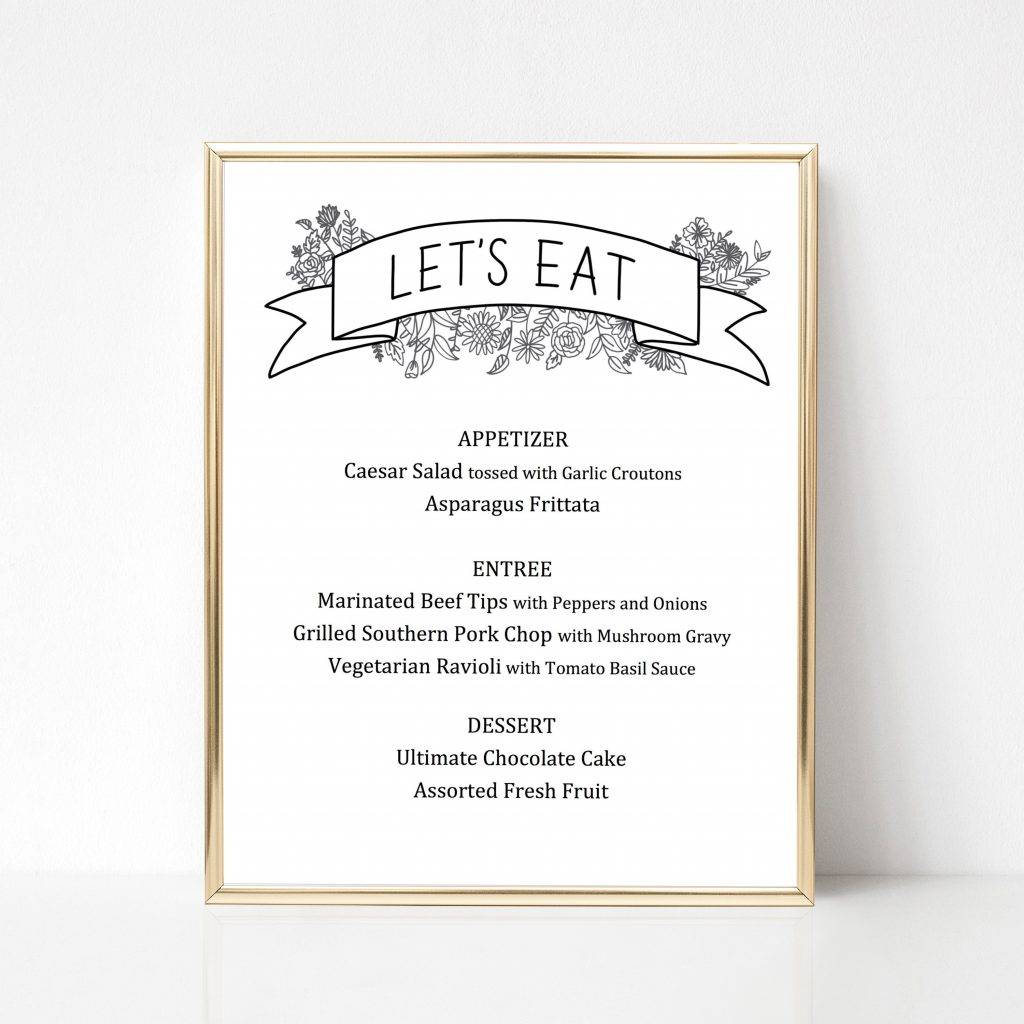
Putting Out Food
1. Provide a balanced meal
Don’t make all of your dishes that has all lots of calories without any nutritional content. Plan a meal with a salad, protein, vegetable, starch, carbohydrate and dessert. Most often the mistakes that usually happens in buffet meals are that it can feel scattered and uneven. Sometimes there are too many appetizers, side dishes, or main plates. Avoid this problem by planning a balanced meal. You may also see examples of menu design.
Keep in mind that number 1, you can never go wrong by including a vegetable and fruit tray and number 2, put out a vegetarian or vegan option.
2. Plan the food according to the season
Sometimes, the seasons are important factors to plan your buffet menu. If you live in a place where there are four seasons, it is not a surprise that the type of food people eat for meals changes with the seasons. Example, during summertime, it can be deadbeat to eat a heavy meal filled with lots of potatoes and meats. However, during the winter, having only a light salad and fish may feel lacking and light. You may also like pasta menu designs and examples.
Try to plan out what food are best for what season. For example, fruits that contain a lot of water like watermelon, coconut, citrus fruits, are great for summer. Rich foods, such mashed potatoes, are great for winter meals.
3. Choose around six to eight food items
You don’t want to have too few or too many items to choose from. Balance your food items. Too few items can leave your guests without food or forced to eat the food you’ve served that they don’t like. Meanwhile, having too many food choices may cause a big potential for leftover food. The best amount of items are Six to eight items to give everyone enough choices. The serving size depends on the amount of people you are expecting. You may also check out psd menu samples.
Keep in mind to have a variety of food. Don’t just have six or eight all-meat items. Include dishes with vegetables and grains in it too. Also, if you’ll be serving meat, try to have two different choices, such as chicken and fish, or beef and chicken, rather than two pork dishes.
4. Line up the food according to temperature
The first stop on the food line should be the food that is served hot. You want the guests to get to these first before they cool down. This is to ensure that your guests won’t be dining on cold main courses. The cold foods should be at the end of the table. If you have difficulty in keeping dishes at their desired temperatures, putout chafing dishes to keep foods hot, and ice platters to keep food cold. You might be interested in coffee menu examples.
5. Arrange the food strategically
Put the cheapest food you have the most of at the beginning of the table. Put the most expensive and scarce food at the end of the table. This is a good idea of a set it up since usually, the food at the beginning of the table goes away the fastest. However, you can also switch foods during the course of the buffet. Example, if the vegetarian food aren’t being eaten enough, switch them out with a food that is going fast. You may also see spa menu designs and examples.
6. Don’t forget to add decorations
Once the you finished setting up the table, add decorations to embellish the appeal of the table. Don’t choose decorations that will get in the food or in the way to block people from the food. If you’re having a buffet for a holiday, choose decorations that correspond with that holiday. However, don’t get too carried away with the decorations. You may also like examples of lunch menu designs.
A scatter of confetti is better than large ornaments and figures that take up too much space. If you want to have a statement decoration, put it on a table that your guests won’t flock over too much, such as the desserts table or drinks table.
Elegant Buffet Menu Design
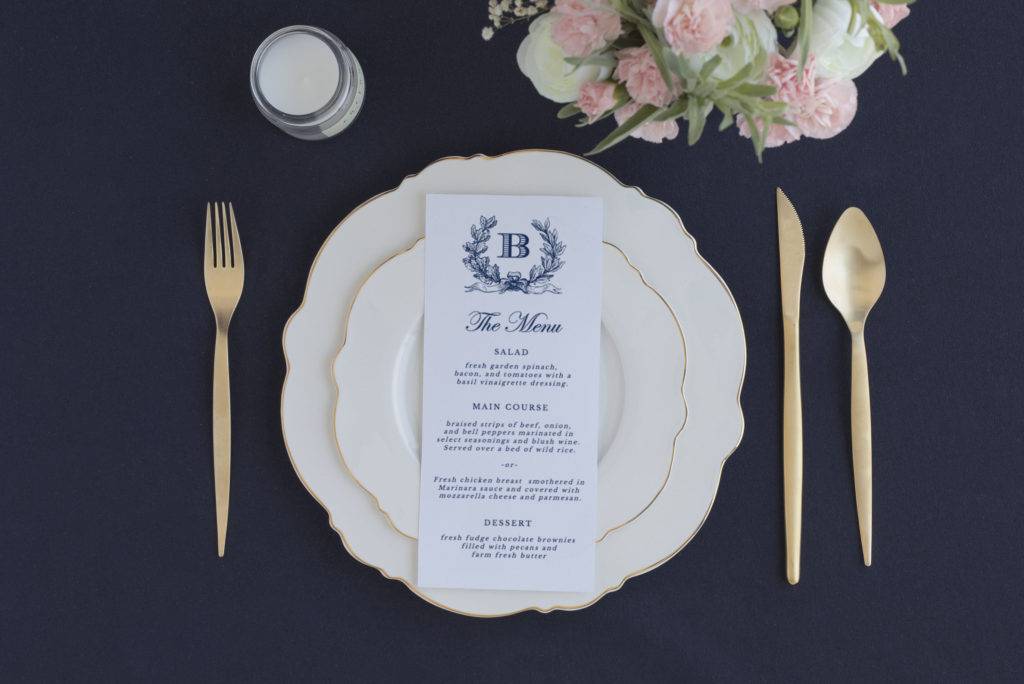
Buffet Menu on an Easel Design
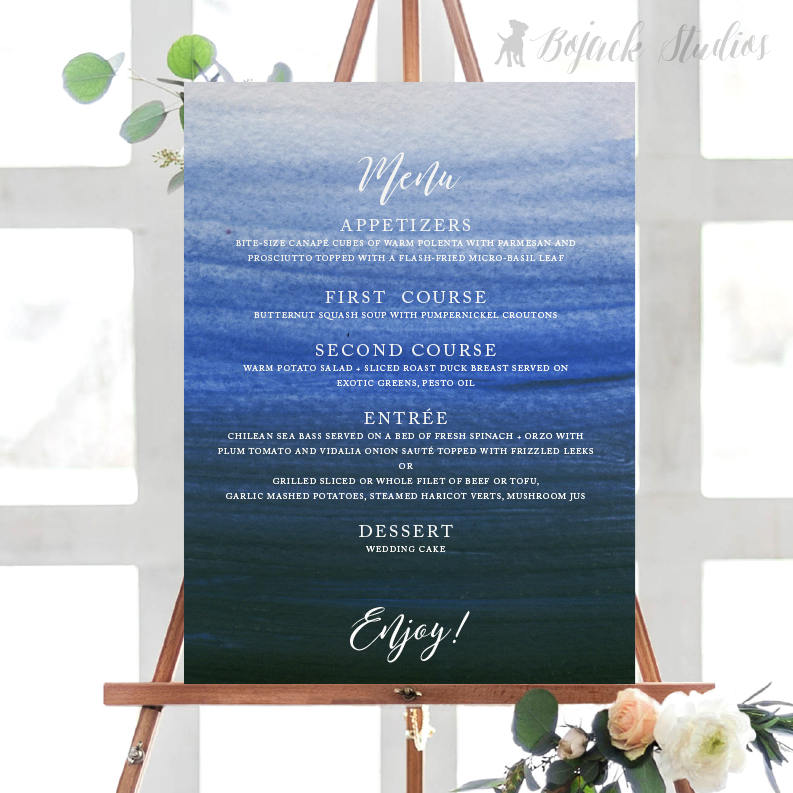
Buffet Menu Vintage Design
